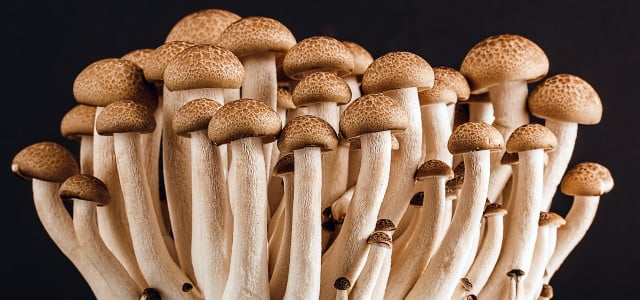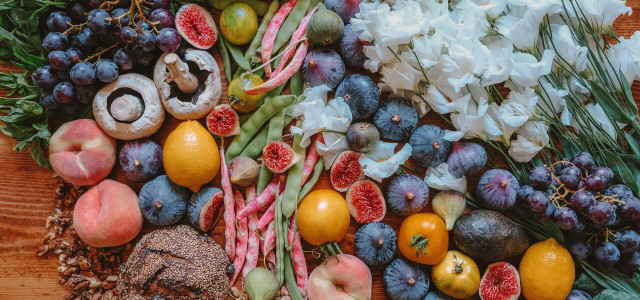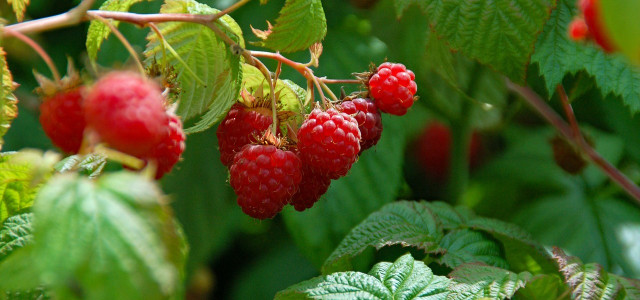What we eat affects our bodies and has a significant impact on the world around us. We’ll discuss 6 eco-friendly foods to add to your diet right now.
We can find almost any food we want at the supermarket these days, but at what cost to the environment? There are many issues to consider in food production, such as climate emissions, water pollution and consumption, biodiversity loss, pesticide use and packaging. This article will focus on eco-friendly foods with the lowest environmental impact and provide you with some tasty recipes.
An important point to consider when choosing food products is food miles, or the distance food travels to reach the consumer. To reduce transportation emissions, pick locally-grown, in-season produce.
Let’s learn about the versatile, eco-friendly foods you should add to your diet.
1. Pulses and Beans: Among the Most Eco-friendly Foods
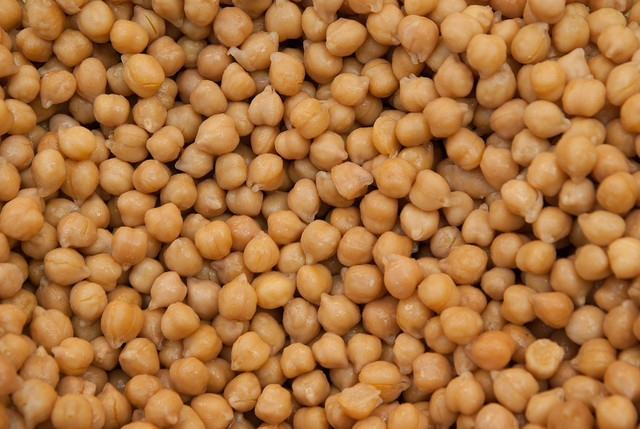
Beans and pulses like lentils, chickpeas and peas come from nitrogen-fixing plants, which means they can convert nitrogen from the air into nitrogen compounds that act as a natural fertilizer. Bacteria live in small groups on the plant roots, called nodules. The nitrogen-fixing takes place within the nodules, where the bacteria produce nitrogen as they decompose. This nitrogen is returned to the surrounding soil and plants.
So, beans and pulses are great for fertilizing soil, reducing the need for artificial fertilizers. They also don’t need a lot of water to produce good crops, as the roots store moisture to feed the plant.
Beans are highly nutritional, contain B vitamins, fiber and protein, and are low in fat and cholesterol — making them a great meat replacement. That means they’re both energy-enhancing superfoods and eco-friendly foods. However, beans are the poorest nitrogen fixers of all the pulses, so artificial nitrogen is often added during the growing process.
Check out this Cuban black bean soup recipe and learn why to save bean water and how to use it. For your pulse fix, find out how to cook red lentils or try this tasty vegan chickpea salad.
Other beans and pulses are also commonly available and easy to work into your diet, like mung beans, which are high in fiber and antioxidants. Check out our mung bean porridge recipe for more inspiration. Try switching up your peas as well, and opt for split yellow or whole yellow peas.
2. Mushrooms



According to a 2017 report, the environmental impact of growing mushrooms is low due to minimal energy and water consumption. They can also grow in conditions other plants cannot, such as on crop waste, which acts as a natural compost.
Mushrooms and fungi can assist forests in absorbing carbon. Here’s what makes mushrooms an exceptionally eco-friendly food: Their base consists of tiny “roots” or mycelium, which sequester carbon and supply nutrients to surrounding vegetation. The mycelium weaves into the roots of plants, which host the growing fungi or mushrooms and break down organic matter, improving soil quality and moisture.
Mushrooms are easy to cook, and different varieties have different flavors. Try our vegan mushroom risotto for a tasty main course, or check out these 3 mushroom desserts.
Mushrooms grow naturally in the wild in damp, shady spots like forests or compost heaps. Why not try foraging for mushrooms locally? You may be surprised at the diversity of options, such as chicken of the woods, honey mushrooms or lion’s mane. Bring this handy field guide with you, and remember to always consult an expert before eating wild mushrooms.
3. Seaweed or Algae
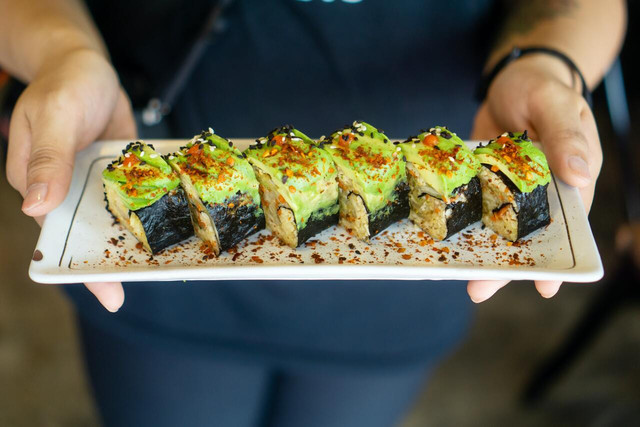


Adding seaweed or algae to your diet is a great way to lower your carbon footprint. Seaweed is a type of algae typically divided into three groups: red, green and brown.
According to the National Ocean Service, half of all global oxygen comes from ocean plankton, including seaweed. These plants are vital for oceanic ecosystems and are excellent at absorbing carbon. Seaweed or algae can grow quickly in huge amounts, be harvested at any time, and typically don’t need artificial fertilizers or produce any pollution.
Are you wondering how to introduce algae into your diet? One option is using agar agar, a gelling agent used in desserts, similar to jello. Alternatively, eat seaweed as a savory option, for example, by using kombu seaweed in a broth, salad or topping. Find out more about why ocean seaweed is good for you and the environment.
4. Eco-friendly Foods Include Organic Vegetables



A study by Arizona University analyzed the environmental impact of 57,000 foods. Their results suggest that many of the most nutritious options are eco-friendly foods. For example, leafy vegetables have a low environmental impact and high nutrition content. However, red meat has the highest number of health risks associated with it and producing it is 100 times more damaging to the environment than growing vegetables.
The Our World in Data website has an interesting page where you can filter and compare the environmental impacts of different foods.
Scientists at the University of Manchester conducted a more detailed study in 2019 of different types of vegetables. Each vegetable was assessed on its environmental impact, including water consumption and the energy needed to produce and transport it. Types of cabbage, celery and brussels sprouts came out on top as the most eco-friendly vegetables, while asparagus scored worst.
To reduce the carbon footprint of your vegetable consumption, ensure that the produce you buy is harvested locally and buy vegetables that are in season. Look for organic labels, as artificial pesticides and fertilizers can harm the environment. It’s also good to try to minimize plastic packaging. The best approach? Growing your own vegetables from scratch.
5. Edible Cacti
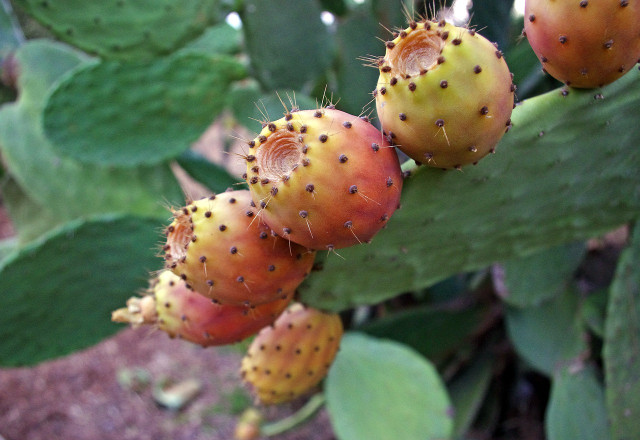


Cacti are hardy desert plants grown in dry, hot, drought-prone areas unsuitable for other plants. Cacti store water in their pads and retain it during droughts, meaning they don’t need much irrigation compared to other crops. They can also establish themselves quickly, requiring only simple farming techniques. Cacti also have a high nutritional value. A 2020 study concluded that cactus pear fruit peels (used in chutneys and juice or eaten dried and preserved) contain high antioxidants.
For those new to cacti, a good place to start is with the prickly pear cactus, which can usually be found in the international foods section of the grocery store or at farmer’s markets. After the spines are removed, the pads can be grilled, added to salads, eaten raw or stir-fried. Alternatively, the fruit can be eaten raw or juiced — it tastes like watermelon. Remember to consider food miles when eating cacti.
6. Easy Eco-Friendly Foods: Cereals
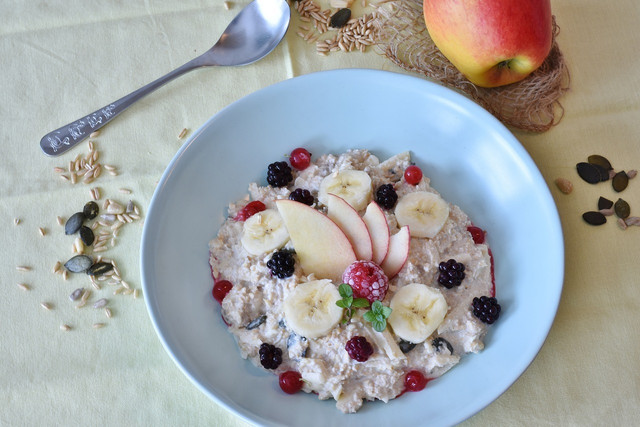


According to Our World in Data, certain cereals, like maize, wheat and rye, have particularly low carbon footprints, omitting only 1.4 kg of carbon per kg of product produced. Oats also fare well, at 2.5 kg of carbon per kg of oats grown.
Oats can also be sown in between the harvests for other crops. This replenishes the soil and maintains its quality. Learn more about where oats come from and whether they’re sustainable.
However, it is not the same situation for cereals. Rice has a higher carbon footprint than maize, wheat and rye — almost double due to the methane emitted from rice paddies. As with all the foods in this article, the final rice product is most eco-friendly when produced organically and locally, with minimal packaging.
Now that you know what to add to your diet, check out these 14 controversial foods you may want to cut down on.
Read more:
- How to Cook Bulgur Wheat: 3 Easy Recipes
- Old Fashioned vs. Quick Oats? The Difference Explained
- Pan Fried Brussels Sprouts Recipe: Easy and Quick
Important Information regarding Health-related Topics.
** Links to retailers marked with ** or underlined orange are partially partner links: If you buy here, you actively support Utopia.org, because we will receive a small part of the sales proceeds. More info.Do you like this post?






